Buying With an FHA Loan – What to Expect
 The Federal Housing Administration (FHA) was created in 1934. The administration’s goal was to provide loan insurance, reduce unemployment, and increase housing construction. The FHA does not make loans directly to borrowers; instead, it insures loans for borrowers that lending institutions may deem high risk based on credit score or low down payments. In the past 70 years, the program has allowed scores of first-time homebuyers to enter the housing market and achieve the dream of homeownership when they aren’t able to do so through traditional means.
The Federal Housing Administration (FHA) was created in 1934. The administration’s goal was to provide loan insurance, reduce unemployment, and increase housing construction. The FHA does not make loans directly to borrowers; instead, it insures loans for borrowers that lending institutions may deem high risk based on credit score or low down payments. In the past 70 years, the program has allowed scores of first-time homebuyers to enter the housing market and achieve the dream of homeownership when they aren’t able to do so through traditional means.
What Should Borrowers Expect When Seeking FHA Financing?
Most home buyers know what to expect when it comes to a conventional mortgage: excellent credit combined with a 20 percent down payment equals a successful application. What if your borrower profile doesn’t match those worthy goals? An FHA loan may offer another avenue for success. When applying for an FHA loan, expect the following:
- Because the FHA doesn’t make loans directly, borrowers will still work with a mortgage company or bank. Fees associated with an FHA loan include an origination fee of up to 1 percent of the home’s purchase price, required home inspections, and pre-paid mortgage insurance.
- A borrower’s credit score doesn’t have to be perfect. The average credit score of a borrower seeking an FHA loan in 2016 was approximately 680; however, a borrower’s credit score may be lower. FHA requires that a borrower’s score is greater than 580 in most cases, although sometimes a lower score will still be approved.
- The borrower will need a smaller down payment than a conventional loan. This may be the most attractive aspect of an FHA loan. Particularly for first-time borrowers, coming up with a 10 to 20 percent down payment can be difficult. First-time borrowers do not have the benefit of proceeds from a previous home to pay the down payment. Borrowers with a credit score of at least 580 will only need a down payment of 3.5 percent. Those with a lower credit score will need 10 percent.
- Insurance payments last the life of the loan. Unlike a conventional mortgage where the borrower can cease carrying private mortgage insurance once the equity in the home reaches 20 percent, an FHA borrower will continue to pay for loan insurance throughout the life of the loan. Some borrowers choose to refinance the home with a conventional mortgage once they have significant equity in the home to avoid continued insurance payments.
- A borrower can choose from a variety of homes. The intention of the FHA program is to increase home ownership, but there are some restrictions. Nonetheless, the program allows borrowers to finance single-family homes, town homes, condos, and mobile homes. The process to purchase a single-family home is the least restrictive. For attached homes such as condos or town homes, the program requires that at least 80 percent of the community’s units must be owner-occupied rather than rentals. For mobile or manufactured homes, the applicant must own the property on which the home will sit.
Today, FHA loans are particularly attractive to millennials who typically have average credit scores and lower savings. Of the loans closed in January 2017, 35 percent of the loans made to millennials were FHA-insured. Millennials are typically carrying other debt such as student loan burdens which have made it difficult to save for a down payment when purchasing a home in Edina. The lower down payments associated with an FHA insured loan make homeownership possible for this group as well as others who are credit-worthy but have fewer assets.



